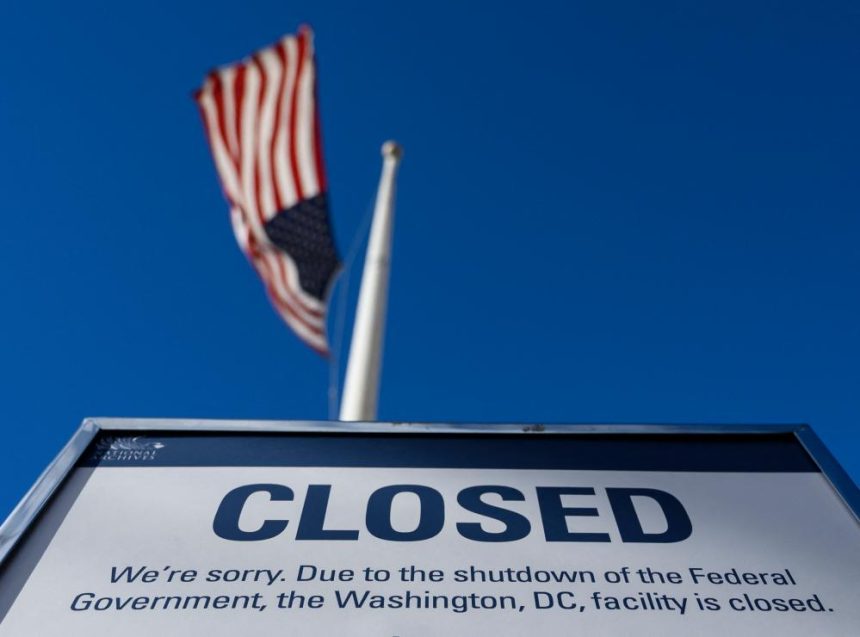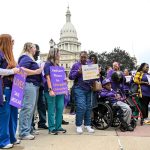The federal government is once again on the brink of a shutdown, unless Congress can reach a funding agreement before the start of the new fiscal year, on 1 October.
With the clock ticking and both Democrats and Republicans seemingly dug in, there is little time left to avoid a lapse in federal funding. And in a sharp escalation of how past shutdowns have worked, the White House has instructed agencies to make plans for permanent mass layoffs in programs poised to lose funding.
What is a government shutdown?
If a deal isn’t reached by midnight on 30 September, parts of the government will begin shutting down. Without that money, many parts of the government cannot operate and federal agencies are forced to cease all non-essential functions until Congress acts.
Related: White House tells agencies to prepare for firings if government shuts down
With both chambers narrowly divided and deeply polarized, shutdown threats have become a feature of Washington’s budget battles. A standoff in 2018, during Trump’s first term, resulted in a 34-day shutdown, the longest in the modern era. At the time, roughly 800,000 of the federal government’s 2.1 million employees were sidelined without pay.
What’s causing the fight this time?
The federal government’s new fiscal year begins on 1 October, and Congress has yet to strike an agreement on a short-term funding bill.
Donald Trump canceled talks with Democratic congressional leaders earlier this week, saying a sit-down would not be “productive” and assailing their demands as “unserious”. The move infuriated the Democrats, with Senate minority leader Chuck Schumer and House minority leader Hakeem Jeffries blaming the president and congressional Republicans, who control both chambers, for a possible shutdown.
The Senate last week rejected competing stopgap measures to avert a shutdown, after the Republican-controlled House narrowly passed a funding bill with all but one Democrat opposed.
Congressional Democrats are under pressure to use their leverage to stand up to Trump and his administration. In March, Schumer lent the necessary Democratic votes to approve a short-term funding, Republican-written measure without securing any concessions – a move that infuriated the party’s base.
In exchange for their votes in the Senate, Democrats are demanding an extension of subsidies that limit the cost of health insurance under the Affordable Care Act and are set to expire, a rollback of Medicaid cuts made in Trump’s One Big Beautiful Bill Act, and the restoration of funding to public media that was cut in the rescissions package.
In an interview on CNN, Senate majority leader John Thune called Democrats’ healthcare demands “completely unhinged and unreasonable and unserious”.
“If they want to have a serious conversation, I think that I’m sure the president would be welcome or would be happy to do that,” he added.
Schumer shot back on X: “What’s ‘unserious’ is ignoring the 93% spike for health insurance coming to Americans on November 1.”
Why is this year’s threat more serious?
This time, the impact on federal workers could be even more severe. In a memo released on Wednesday, the White House’s Office of Management and Budget told agencies not just to prepare for temporary furloughs but for permanent layoffs in the event of a shutdown.
Related: Trump cancels meeting with top Democrats as federal shutdown looms
The memo directed agencies to ready reduction in force notices for federal programs whose funding sources would lapse in the event of a shutdown and are “not consistent with the president’s priorities”.
OMB led the administration’s earlier efforts to shrink the federal workforce as part of a broader government efficiency campaign led by Elon Musk’s “department of government efficiency”.
In a statement on Thursday, AFL-CIO’s president, Liz Shuler, said government employees had “already suffered immensely” this year under the Trump administration’s vast cuts to the federal workforce. “They are not pawns for the president’s political games,” she said.
Asked about the memo on Thursday, Trump blamed Democrats, saying a shutdown was what the party wanted. “They never change,” he said.
At a news conference, Jeffries said on Thursday that Democrats “will not be intimidated” by the Trump administration’s threats to fire more federal employees if the federal government shuts down. He added that his message to Russell Vought, the head of OMB, was simple: “Get lost.”
What happens if the government shuts down?
In the event of a full or partial government shutdown, hundreds of thousands of federal workers may be furloughed or required to work without pay. Operations deemed essential – such as social security, military duties, immigration enforcement, and air traffic control – continue, but other services may be disrupted or delayed. Mail delivery and post office operations will continue without interruption.
The effect can be wide-ranging and long-lasting. Previous shutdowns have closed national parks and the Smithsonian museums in Washington; slowed air travel; delayed food safety inspections and postponed immigration hearings.
While the broader economy may not feel the effects immediately, analysts warn that a prolonged shutdown could slow growth, disrupt markets, and erode public trust.









